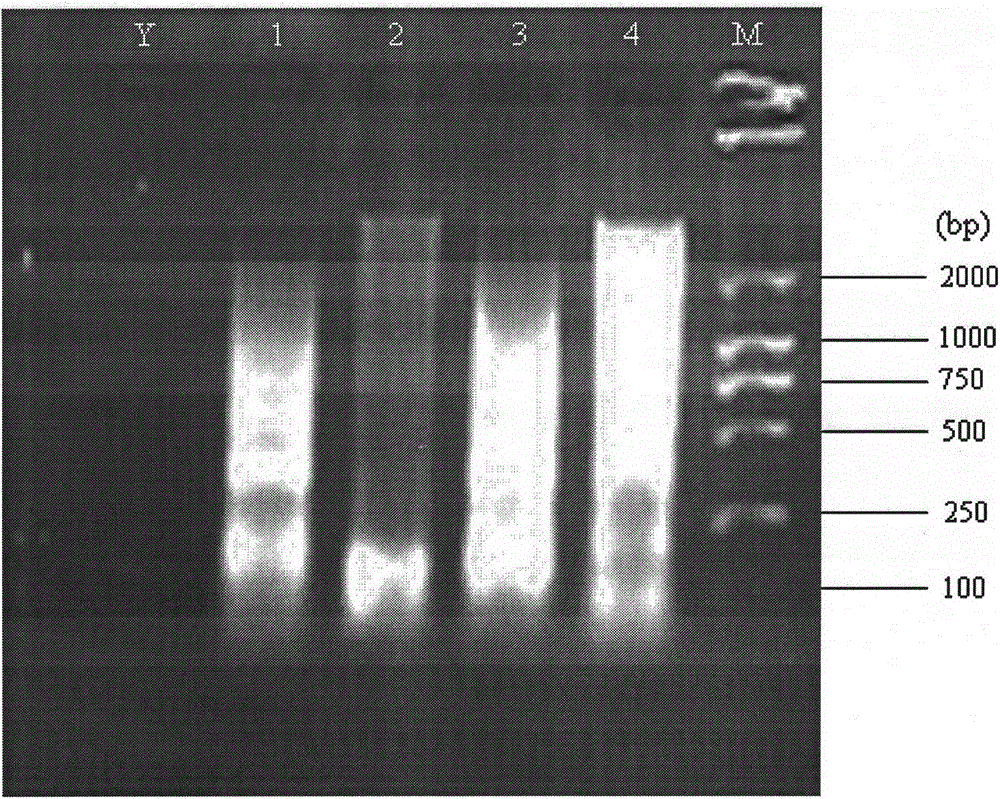Dasyatis zugei microsatellite sites, primers and application thereof
A technology of microsatellite loci and sharp beaks, which is applied in the field of primers and microsatellite locus sequences of sharp beaked ray, can solve the problems that the molecular genetics research of cartilaginous fishes has not been carried out
- Summary
- Abstract
- Description
- Claims
- Application Information
AI Technical Summary
Problems solved by technology
Method used
Image
Examples
Embodiment Construction
[0012] The present invention will be described in detail below in conjunction with specific embodiments.
[0013] 1. DNA extraction
[0014] Genomic DNA was extracted from the muscle tissue of the sharp-billed ray. SDS / proteinase K cleavage and phenol-chloroform extraction were used for the extraction method (Sambrook et al., 1999). DNA extraction results see figure 1 (display part).
[0015] 2. Construction of Microsatellite Enrichment Library of Stingray Stingray
[0016] Take about 250ng of genomic DNA, use the restriction endonuclease MseI to break, and connect with the AFLP receptor of MseI (5'-TAC TCA GGA CTC AT-3' / 5'-GAC GAT GAG TCC TGA G-3') to connect. After diluting the digestion product tenfold, PCR amplification was performed using AFLP receptor-specific primers (5'-GAT GAG TCC TGA GTA AN-3', referred to as MseI-N). The amplified product was detected using 1% agarose-EB gel, and the result was a diffuse band greater than 200bp, see figure 2 .
[0017] Prob...
PUM
 Login to View More
Login to View More Abstract
Description
Claims
Application Information
 Login to View More
Login to View More - R&D
- Intellectual Property
- Life Sciences
- Materials
- Tech Scout
- Unparalleled Data Quality
- Higher Quality Content
- 60% Fewer Hallucinations
Browse by: Latest US Patents, China's latest patents, Technical Efficacy Thesaurus, Application Domain, Technology Topic, Popular Technical Reports.
© 2025 PatSnap. All rights reserved.Legal|Privacy policy|Modern Slavery Act Transparency Statement|Sitemap|About US| Contact US: help@patsnap.com



